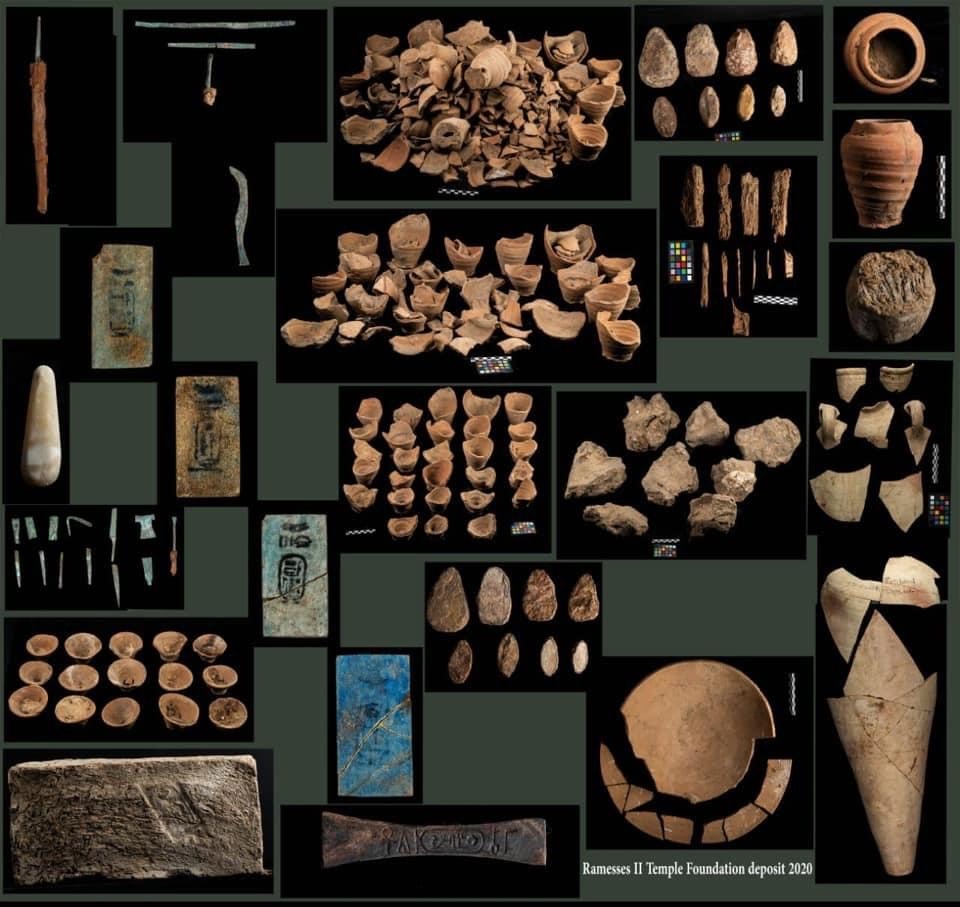- EraNew Kingdom/ Roman-Byzantine/Islamic
- Project DirectorDr. Sameh Iskander
- LocationAbydos
- AffiliationNew York University
- Project SponsorAntiquities Endowment Fund
- Project dates: 2019 - 2020
On March 15, 2023, our New York University expedition concluded its seventh excavation and conservation season within the precinct of the temple of Ramesess II in Abydos. The last season was funded by an AEF grant from the American Center in Egypt, for whom we are greatly grateful. A few site management items remain to be addressed in the future. The work revealed important multifaceted new perspectives of the temple precinct that included the discovery of all of its enclosure walls, temple palace, storage magazines, and restoration of the mud-brick first pylon.
Before we commenced our excavations, the temple stood within the Abydos landscape without a hint of the extent of its surrounding precinct. During this season, we were able to excavate and clear the entire precinct, including its 42 magazines and enclosure wall.
Temple precincts provide a wealth of information about many of the ritual, administrative, economic, and social activities within their domain. Once cleared, its area turned out to be a 100 meters x 90 meters rectangular enclosed by 3.25 meter-thick mud-brick walls whose function was twofold: to delineate the temple estate from the surrounding habitation and to protect it and its rich contents in times of civil unrest. Our conservation work included raising the elevation of several of these walls to an appropriate level depending on the outside terrain to give the visitor a sense of the extent of the precinct space.
The eastern side of the site was enclosed by the first pylon, which has completely
disappeared, save for its foundation measuring 8 meters by 58 meters, which we cleared this season. It turned out to be built entirely of mud brick flanking a limestone gateway that survived to a level of about 2 meters. The use of the mud-brick rather than stone for building the pylon of Ramesses II temple seems unprecedented for his temples, as well as the the ensuing Ramesside temples. We restored it to a height averaging 1.50 meters to 2 meters, along with its limestone gateway, in order to emphasize its presence, as well as to maintain the sense of the temple’s architectural integrity.

Furthermore, the excavation revealed that the first court just mentioned (between this pylon and the second limestone pylon) is paved with mud-bricks, once more an unusual architectural temple feature during the Ramesside period. Within this court there are remains of a late Roman/Byzantine mud-brick settlement (Fig. X), which we decided to restore to give the sense of the later occupation phases and reuse of the temple, which is a rare opportunity as these late structures were usually removed from other sites during earlier excavations.

A large area of the precinct was dug during the late Roman times, as seen in Fig. 2, and converted into what appears to be an agricultural farm, with a mud layer of approximately 50 centimeters spread over approximately 910 square meters. The mud of this layer was in fact reused from the crushed bricks of the magazines mentioned above. Instead of bringing clay form the river bank, it certainly was more expeditious at the time to crush and reuse the mud bricks of the magazine and enclosure walls.

After removing this layer, we in turn reused this mud for the manufacturing of new bricks for the conservation of the enclosure wall and the pylon. The recycling or resurrection of the mud had a special meaning in ancient Egypt. We also discovered a large well 8 meters deep and constructed with red bricks, that was obviously used for the irrigation of the converted farm area.
The excavation yielded various finds dated to diverse periods ranging from the
Ramesside period to early Islamic times. Over four hundred objects from stratified features of occupation were catalogued.

These objects included a head of a black granite goddess dating to the reign of Tuthmosis III, a twenty-sixth dynasty seated steatite statue, eleven stelae, Coptic and Demotic ostraca, as well as temple wall fragments that were dumped in the surrounding area by Mariette during his 1860’s excavations.


In conclusion, this season is the final excavation season within the precinct, and was the last stage of a long-term project toward a comprehensive analysis of the stratified features and chronological phases of the entire temple precinct during a long period of time, over a millennium. We hope the data gleaned from the project will ultimately contribute to a broad understanding of the various activities of this important ancient Egyptian monument, its role within Abydos, and ultimately its fate.